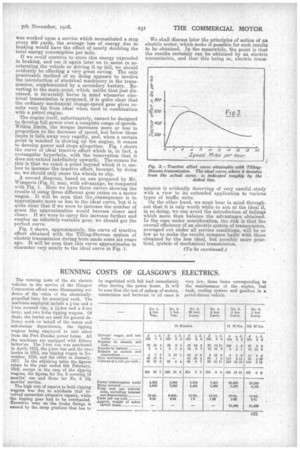RUNNING COSTS OF GLASGOW'S ELECTRICS.
Page 11

If you've noticed an error in this article please click here to report it so we can fix it.
The running costs of the six electric vehicles in the service of the Glasgow Corporation afford sonic illuminating evidence of the value of the electrically. propelled lorry for municipal work. The machines employed include a i-ton and a 1-ton covered van/ a 11-ton and a 3-ton lorry,and two 5-ton tipping wagons. Of these, the lorries are used for general delivery work on behalf of the mains and sub-station departments, the tipping wagons being employed to cartashes from the Port Dundas power house. All the machines are equipped with Edison batter:es. The 1-ton van was purchased in April,1913, the i-ton van and the two' lorries in 1915, one tipping wagon in November, 1916, and the other in January, 1917. In the adjoining table the figures relate to the year ended 6th February, 1918, except in the ease of the tipping wagons, the figures for No. 5 covering 14 months' use and those for No. 6 12i months' service.
The high cost of repairs to both tipping wagons was due to accidents that involved somewhat extensive repairs, while the tipping gear had to be overhauled. Excessive wear on the brake linings is caused by the, steep gradient that has to
be negotiated with full load immediately after leaving the power house. It will be seen that the cost of upkeep of motors, connections and batteries in all eases is
very low, these items corresponding to the maintenance of the engine, fuel tank, cooling system and gearbox in petrol-driven vehicle.






















